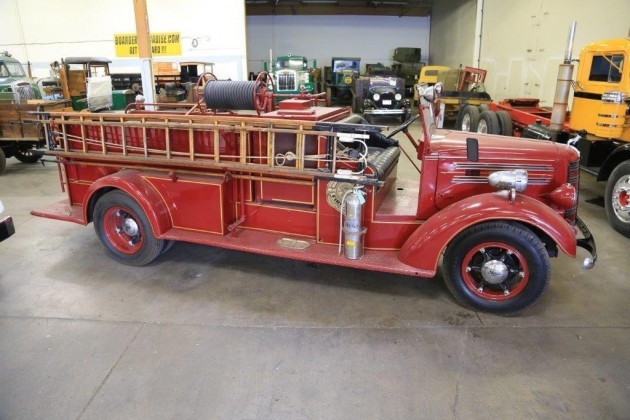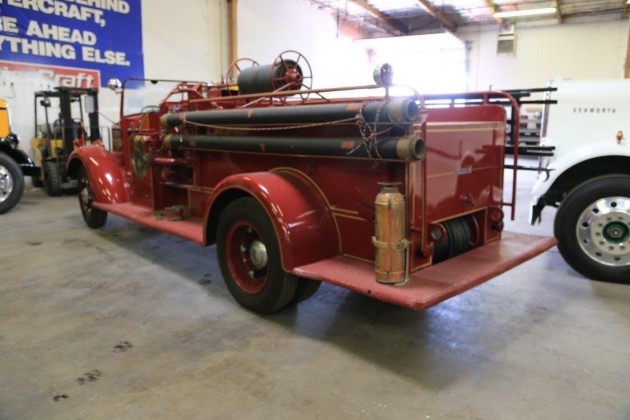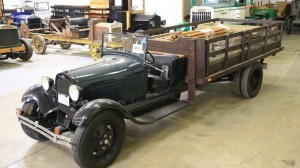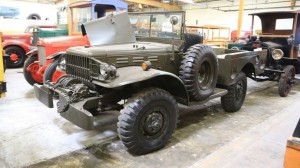Farewell old friend. This fire truck was part of an incredible collection of trucks at the Hays Truck Museum in nearby Woodland, California. I enjoyed my visits for more than 20 years, but now the collection has been sold and relocated to the National Auto Museum in Reno, Nevada. The National Auto Museum is a wonderful collection of cars. This fire truck is now listed on eBay, along with several of the other trucks from the museum.
This truck was restored some time ago and was in the museum for years. It is a great example of what fire engines were like back in the ’40s! They definitely don’t build them like this anymore.
Here are a couple of the other trucks that have been listed, the Ford Model AA 1 ½ ton flat bed and the Dodge WC53 weapons carrier. You can see a couple of the other trucks in the background. The collection was a marvelous look into the early days of trucking and will be sorely missed. Hopefully, these trucks will find good homes where they will be preserved and enjoyed!






Nice fire engine. What I don’t understand why there are 12 sparkplugs but only six connected and the distributor is only set up to fire 6?
Maybe belt and suspenders? If a plug gets fouled on an emergency run, a quick disconnect and reconnect and they’re back in business? There’d be no loss of compression because the fouled plug would remain in place. And there are only six outlets on the distributor because it’s only a six-cylinder engine. Just a guess, but it sorta makes sense, no?
I believe that many firetruck engines had dual ignition systems in case one system failed. When the truck was restored, maybe they did not feel the need to spend the extra money for the second system.
Seems to make sense.
Hi Jim, Ed is right. My dad’s business partner in the 70’s bought a 50’s Seagrave ladder truck, and it was a 6 cyl. with dual ignition. This set up is a little different, as the Seagrave engine, which I believe was their own motor, had 2 distributors, 12 plugs and all the wiring hooked up, and a switch on the dash to switch back and forth. This seems a little more crude, ahh, but it’s a Mack. It appears to be a EN354 Mack engine,( about 120 hp) with that distributor in the middle of the head, but must have an updraft carburetor.
I always thought the dual systems were complete systems, independent from each other. The idea gradually lost ground due to the increased reliability of ignition systems. Howard, it’s my understanding that the EN354 engine was actually built by Continental. It was a similar engine to the one that powered the larger REO although I think the REO engine was something like 331 CID. I’m quite surprised to see an updraft carburetor in a truck of that vintage although I saw a Dodge COE of similar age having an updraft but that was because of lack of space.
Complete side note, but if you wish to see some neat old macks there is a great museum in Allentown. It is in the old Mack test development center and one of the neat things is that you get to go into the old anaerobic chamber where noise is cancelled out. It is just weird.
It is an interesting place to visit with a lot of Macks through the ages
Disappointed I never had time to stop at this museum on my many trips up and down interstate 5. ( usually in the middle of the night )
But now I have a reason to visit Reno.